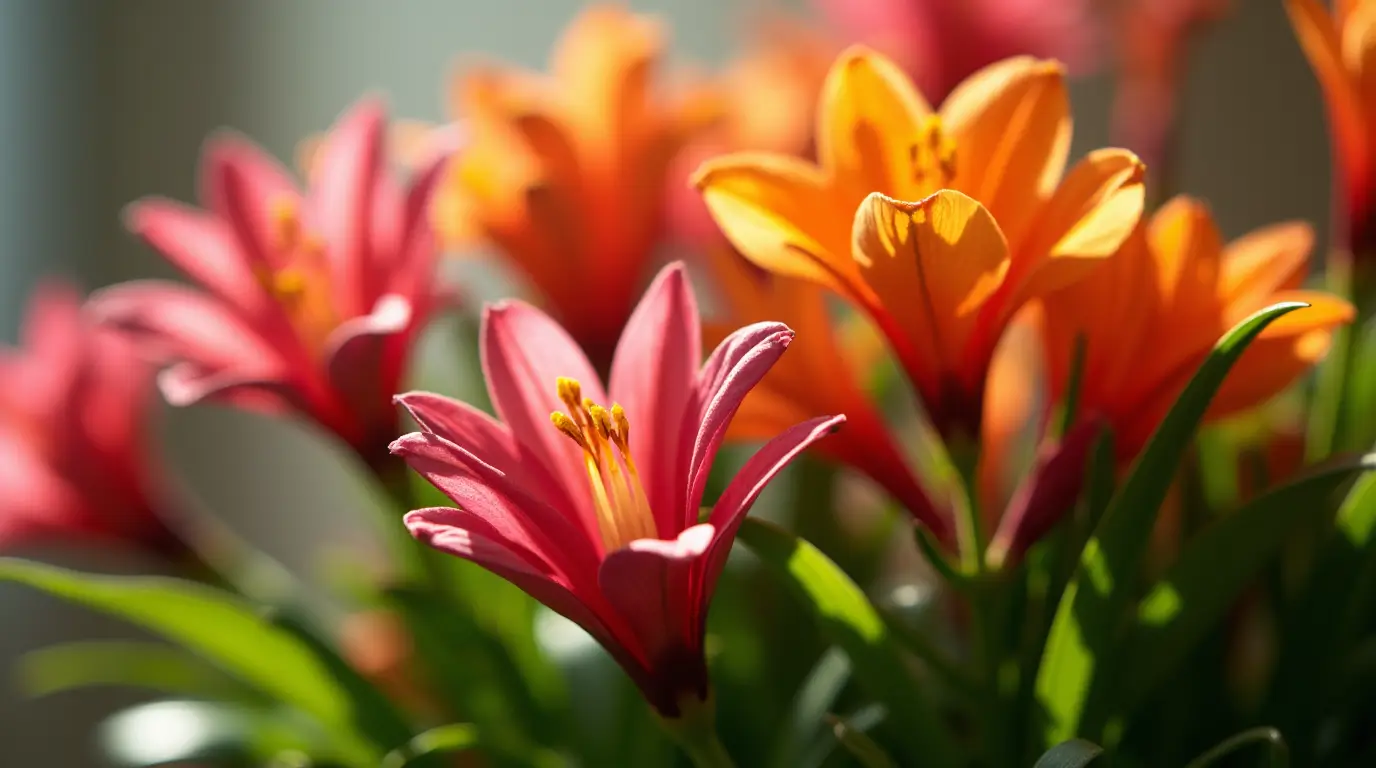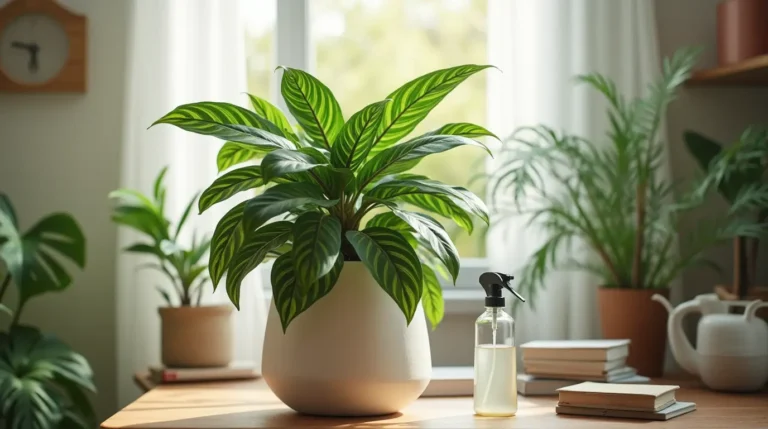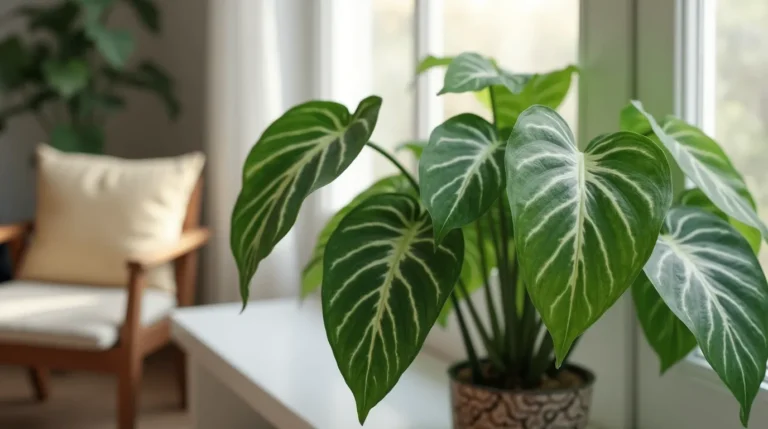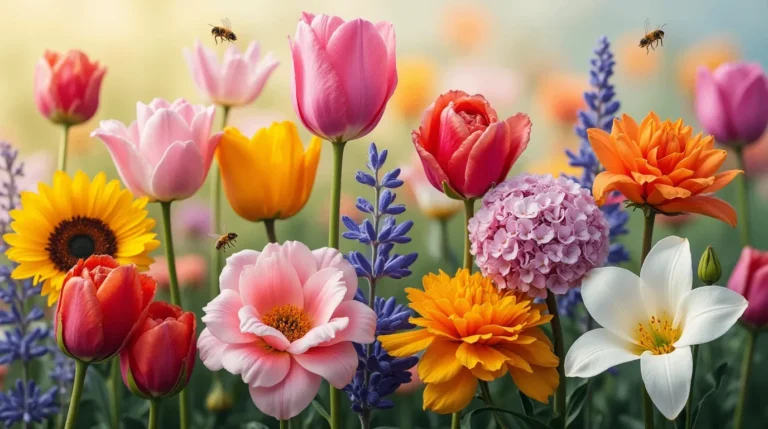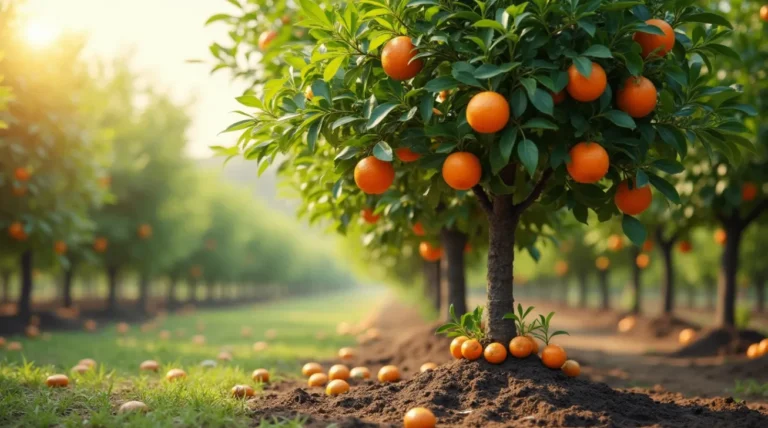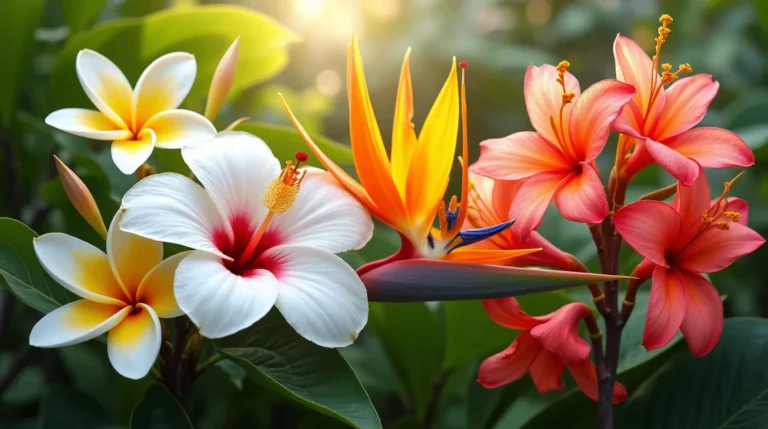Alstroemeria Care 101: Everything You Need to Know
Proper care for Alstroemeria, also known as the Peruvian lily, is crucial for enjoying its beautiful blooms throughout the growing season. This delicate flower requires specific conditions to thrive, and understanding these needs is key to successful cultivation.

By following the right care guidelines, gardeners can promote healthy growth, maximize flowering, and enjoy the long-lasting blooms that Alstroemeria is known for. Whether you’re a seasoned gardener or just starting out, this comprehensive guide will walk you through everything you need to know about caring for these stunning flowers.
Key Takeaways
- Understand the optimal growing conditions for Alstroemeria
- Learn how to plant and water Alstroemeria correctly
- Discover tips for promoting healthy growth and maximizing blooms
- Find out how to protect your Peruvian lilies from common pests and diseases
- Get insights into the best practices for cutting and arranging Alstroemeria flowers
Understanding the Alstroemeria Flower
Understanding the Alstroemeria flower involves exploring its origins, varieties, and growth patterns. This knowledge will help gardeners appreciate the unique features and needs of this beautiful flowering plant.
Origin and Natural Habitat
Alstroemeria is native to South America, particularly in the Andes mountains. It thrives in cool, moist environments, often growing in shaded areas. The plant’s natural habitat has influenced its hardiness and adaptability.

Popular Varieties and Colors
Alstroemeria comes in a variety of colors, including white, yellow, orange, pink, and red. Some popular varieties include ‘Butterfly,’ known for its delicate patterns, and ‘Mondragon,’ recognized for its vibrant colors. These varieties offer a range of choices for gardeners and florists.
| Variety | Color | Notable Feature |
|---|---|---|
| Butterfly | Multi-colored | Delicate patterns on petals |
| Mondragon | Vibrant orange/red | Long-lasting blooms |
Growth Characteristics and Lifecycle
Alstroemeria is a perennial plant that grows from tubers. It has a relatively long blooming period, typically from mid-spring to early fall. The plant’s lifecycle includes a dormant period during winter, during which it conserves energy for the next growing season.
By understanding these aspects of the Alstroemeria flower, gardeners can better care for their plants and enjoy the blooms for years to come.
Benefits of Growing Alstroemeria in Your Garden
For gardeners seeking to add both beauty and durability to their outdoor spaces, Alstroemeria is an excellent choice. This versatile flower not only enhances the aesthetic appeal of your garden but also provides a range of benefits that make it a popular choice among gardeners.
Ornamental Value and Aesthetic Appeal
Alstroemeria is renowned for its vibrant colors and long-lasting blooms, making it a perfect addition to any garden. The flower comes in a variety of colors, including white, yellow, orange, and pink, allowing gardeners to choose the perfect hue to complement their outdoor decor. Its unique appearance adds a touch of elegance and sophistication to gardens.
Low Maintenance Perennial Option
One of the key benefits of growing Alstroemeria is its low maintenance requirements. This hardy perennial can thrive in a variety of conditions, requiring minimal care and upkeep. It is an ideal choice for busy gardeners or those new to gardening.
Cut Flower Longevity
Alstroemeria is also prized for its long-lasting cut flowers. When used in bouquets, Alstroemeria flowers can last up to two weeks in a vase, making them a popular choice for floral arrangements. Their durability and long vase life make them an excellent option for creating beautiful and long-lasting Alstroemeria bouquets.
| Benefit | Description |
|---|---|
| Ornamental Value | Enhances garden beauty with vibrant colors |
| Low Maintenance | Requires minimal care and upkeep |
| Cut Flower Longevity | Lasts up to two weeks in floral arrangements |

Selecting the Right Alstroemeria Varieties
To ensure a successful Alstroemeria garden, it’s essential to choose a variety that suits your climate and space. With so many options available, selecting the right Alstroemeria can be a daunting task. However, by considering factors such as climate, available space, and desired color palette, you can make an informed decision.
Climate-Appropriate Selections
Alstroemeria plants are sensitive to extreme temperatures and moisture levels. When choosing a variety, consider your local climate. Some Alstroemeria varieties are bred to be more tolerant of heat or cold, making them ideal for specific regions. For instance, some varieties thrive in cooler climates, while others perform well in warmer temperatures.

Space Considerations
The mature size of Alstroemeria plants varies significantly between varieties. Some are compact and suitable for small gardens or containers, while others can grow quite tall. Consider the space available in your garden and choose a variety that fits comfortably, ensuring adequate air circulation and sunlight penetration.
Color and Height Options
Alstroemeria flowers come in a wide range of colors, including white, yellow, orange, pink, and red, often with striking patterns. When selecting a variety, consider the color scheme of your garden and the height you desire. Some Alstroemeria varieties are naturally taller and can add a dramatic touch, while others remain more compact.
By carefully considering these factors, you can select an Alstroemeria variety that not only thrives in your garden but also enhances its beauty with its vibrant colors and elegant blooms.
Planting Alstroemeria: Step-by-Step Guide
Planting Alstroemeria, also known as the Peruvian lily, is a straightforward process that requires attention to detail for optimal results. To ensure a successful start, it’s crucial to understand the best practices for planting these beautiful flowers.
Best Time to Plant
The ideal time to plant Alstroemeria tubers or potted plants is in the spring, after the last frost, or in the fall, about 6 to 8 weeks before the first frost. This allows the plants to establish themselves before the heat of summer or the cold of winter.
Ideal Location and Soil Preparation
Alstroemeria prefers well-draining soil and a location that receives full sun to partial shade, depending on the climate. To prepare the soil, mix in organic matter like compost to improve drainage and fertility.

Planting Technique for Tubers and Potted Plants
When planting Alstroemeria, whether using tubers or potted plants, it’s essential to follow the right technique. For both methods, ensure the soil is moist but not waterlogged.
In-Ground Planting
For in-ground planting, dig a hole that is 2-3 times deeper than the height of the tuber or pot. Place the tuber or plant in the hole, spreading the roots out if necessary, and cover with soil. Water thoroughly.
Container Planting
For container planting, choose a pot that is at least 6-8 inches deep to accommodate the tubers or roots. Fill the container with a well-draining potting mix, plant the Alstroemeria, and water well.
By following these steps and tips, gardeners can successfully plant Alstroemeria and enjoy their beautiful blooms for years to come. Proper alstroemeria care during the planting phase sets the stage for healthy growth and flowering.
Essential Soil and Light Requirements
The right balance of soil and light is essential for Alstroemeria to flourish in any garden setting. Understanding these elements is crucial for creating an optimal growing environment.
Soil pH and Composition
Alstroemeria prefers well-draining soil with a slightly acidic to neutral pH, ranging from 6.0 to 7.0. The soil composition should be rich in organic matter to retain moisture and provide necessary nutrients.
A mix of compost, peat moss, and perlite can create an ideal soil structure. It’s also important to avoid heavy clay soils that can cause waterlogging.

Sunlight Needs by Climate Zone
Alstroemeria requires full sun to partial shade, depending on the climate zone. In cooler climates, full sun promotes healthy growth and flowering, while in warmer climates, partial shade can prevent scorching.
| Climate Zone | Sunlight Needs |
|---|---|
| Cooler Climates | Full Sun |
| Warmer Climates | Partial Shade |
Mulching Benefits and Methods
Mulching around Alstroemeria plants helps retain soil moisture, suppress weeds, and regulate soil temperature. Organic mulches like bark chips or straw are effective and can be applied around the plants after they have started growing.
A layer of 2-3 inches of mulch is recommended, keeping it a few inches away from the plant stems to prevent rot.
Watering Your Alstroemeria Properly
To ensure your Alstroemeria flourishes, mastering the art of watering is essential. Proper watering techniques are crucial for the health and longevity of these beautiful flowers, a key aspect of alstroemeria care.
Seasonal Watering Schedule
Alstroemeria requires different amounts of water at various stages of its growth. During the spring and summer, when they are in bloom, they need more frequent watering. In the fall, as the plants begin to die back, watering should be reduced. Winter care involves minimal watering, as the plants are dormant.
| Season | Watering Frequency |
|---|---|
| Spring/Summer | 2-3 times a week |
| Fall | Once a week |
| Winter | Minimal, as needed |
Signs of Overwatering and Underwatering
It’s crucial to recognize the signs of overwatering and underwatering when growing alstroemeria. Overwatered Alstroemeria may exhibit yellowing leaves and soft, mushy stems. Underwatered plants may have wilted leaves and weak stems. Adjusting your watering schedule based on these signs can help maintain the health of your plants.
Irrigation Methods for Different Growing Conditions
The method of irrigation can vary based on the growing conditions of your Alstroemeria. For plants in well-draining soil, soaker hoses can be effective. For those in containers, watering cans or drip irrigation systems may be more suitable. The key is to deliver water directly to the roots, minimizing evaporation and runoff.
Fertilizing for Optimal Blooms
The key to optimal Alstroemeria blooms lies in a well-planned fertilization strategy. Fertilization plays a critical role in enhancing the growth and flowering potential of these beautiful plants.
Types of Fertilizers for Alstroemeria
Alstroemeria, commonly known as the Peruvian lily, benefits from fertilizers that are rich in nutrients. There are various types of fertilizers available, including balanced fertilizers that contain equal parts of nitrogen, phosphorus, and potassium (NPK). A balanced fertilizer promotes healthy foliage, robust root development, and abundant flowering.
For Alstroemeria, a fertilizer with a slightly higher phosphorus content can be particularly beneficial as it encourages blooming. However, it’s essential to follow the manufacturer’s instructions to avoid over-fertilization, which can be detrimental to the plant’s health.
Fertilizing Schedule Throughout the Growing Season
A well-timed fertilizing schedule is crucial for maximizing Alstroemeria blooms. Typically, the first application of fertilizer should occur in early spring as new growth begins. A second application can be made after the first bloom cycle, to promote additional flowering.
It’s also worth noting that Alstroemeria has a relatively low requirement for fertilization. Thus, a moderate approach to fertilizing is recommended, avoiding excessive application that could lead to weak stem growth and fewer blooms.
“Fertilizing your Alstroemeria at the right time with the right type of fertilizer can make a significant difference in its blooming performance,” says a renowned horticulturist.
Organic vs. Synthetic Options
When it comes to choosing between organic and synthetic fertilizers for Alstroemeria, both options have their merits. Organic fertilizers, derived from natural sources, release nutrients slowly, promoting sustained growth and soil health. Synthetic fertilizers, on the other hand, provide a quick release of nutrients, offering a rapid boost to the plants.
The choice between organic and synthetic fertilizers depends on your gardening philosophy and the specific needs of your Alstroemeria. Organic options are generally considered more environmentally friendly, while synthetic fertilizers can offer more precise control over nutrient delivery.
Seasonal Care for Alstroemeria
As the seasons change, so do the needs of your Alstroemeria; here’s how to care for them throughout the year. Understanding and adapting to these seasonal requirements is crucial for the health and beauty of your Alstroemeria plant. Proper care ensures that your Alstroemeria continues to bloom with vibrant alstroemeria colors year after year.
Spring Care Tasks
In the spring, it’s essential to inspect your Alstroemeria tubers for any damage or rot. Remove any dead or rotting tubers to prevent the spread of disease. Spring is also the ideal time to fertilize your Alstroemeria with a balanced fertilizer, promoting healthy growth and blooming. Apply a layer of mulch around the plants to retain moisture and suppress weeds.
Summer Maintenance
During the summer, ensure that your Alstroemeria receives adequate water, especially during dry spells. Avoid overwatering, as it can cause root rot. Deadheading spent flowers encourages more blooms and maintains the plant’s appearance. Keep an eye out for pests and diseases, taking action promptly if you notice any issues.
Fall Preparation
In the fall, prepare your Alstroemeria for the coming winter by cutting back the foliage after it has died back. This practice helps prevent diseases and promotes vigorous regrowth in spring. Apply a layer of compost or well-rotted manure to the soil to enrich it for the next growing season.
Winter Protection Methods
In colder climates, protect your Alstroemeria tubers from freezing temperatures by applying a thick layer of mulch or straw. In areas with harsh winters, consider lifting the tubers and storing them in a cool, dark place until spring. This care ensures that your Alstroemeria will bloom again with beautiful colors when the weather warms up.
Propagation Methods for Alstroemeria
Propagation of Alstroemeria is a straightforward process that can be achieved through division or seeds. This process allows gardeners to multiply their favorite varieties, share them with others, or simply enjoy more of these beautiful flowers in their garden.
Division Technique
Dividing Alstroemeria tubers is a common method of propagation. The process includes gently dividing the tubers to propagate new plants.
When to Divide
The best time to divide Alstroemeria is in the spring or fall when the plants are dormant. This timing helps minimize stress on the plants.
How to Divide
To divide, gently dig up the tubers, taking care not to damage them. When dividing, ensure each tuber section has at least one visible growing eye. Replant the divisions immediately, watering well.
Growing from Seeds
Growing Alstroemeria from seeds is another viable method, although it may take longer to achieve blooming plants. Sow seeds in a seed tray filled with a well-draining mix, and keep the soil moist until germination.
Caring for New Plants
Newly propagated Alstroemeria plants require careful care. Ensure they receive adequate water and sunlight. Mulching around the plants can help retain moisture and suppress weeds. As the plants grow, they will need fertilizing to promote healthy growth and blooming.
Here are some key tips for caring for new Alstroemeria plants:
- Water regularly, but avoid overwatering.
- Provide sufficient sunlight, ideally full sun to partial shade.
- Fertilize lightly in the growing season.
By following these propagation and care tips, you can enjoy a thriving collection of Alstroemeria, enhancing your garden with their vibrant colors and long-lasting blooms.
Troubleshooting Common Alstroemeria Problems
To keep your Alstroemeria thriving, it’s essential to be aware of the common issues that can arise. Whether you’re dealing with pests, diseases, or growth problems, identifying the issue is the first step towards resolving it.
Pest Identification and Control
Alstroemeria plants can be susceptible to pests like aphids, spider mites, and slugs. Regularly check your plants for signs of pests, like misshapen leaves or sticky deposits. Use organic or chemical controls as needed to manage infestations. For example, introducing natural predators or using neem oil can be effective against aphids and spider mites.
Disease Prevention and Treatment
Diseases such as root rot, botrytis, and leaf spot can affect Alstroemeria. Ensuring good air circulation, removing infected foliage, and avoiding overhead watering can help prevent disease. If you notice any disease, apply an appropriate fungicide as needed. It’s also crucial to dispose of any infected plant material to prevent the spread of disease.
Growth Issues and Solutions
Growth issues, such as weak or spindly stems, can often be addressed through proper care. Ensure your Alstroemeria is receiving adequate sunlight and is fertilized appropriately. Adjusting your watering schedule can also help resolve issues related to overwatering or underwatering. For Peruvian lily, a balanced fertilizer applied during the growing season can promote healthy growth and flowering.
By being proactive and addressing issues promptly, you can enjoy healthy, blooming Alstroemeria plants year after year.
Conclusion: Enjoying Your Alstroemeria Year After Year
With proper care and maintenance, Alstroemeria can be a stunning addition to your garden, providing beautiful blooms year after year. By understanding the alstroemeria flower’s needs and characteristics, you can enjoy its vibrant colors and elegant appearance throughout the growing season.
The alstroemeria symbolism of friendship, devotion, and sincerity makes it a meaningful choice for cut flower arrangements and garden displays. To ensure continued success with these lovely flowers, remember to provide the right soil conditions, adequate sunlight, and appropriate watering.
By following the guidelines outlined in this article, you’ll be well on your way to becoming an alstroemeria expert, capable of enjoying these gorgeous blooms for years to come. With their long-lasting flowers and relatively low maintenance requirements, it’s no wonder that alstroemeria has become a favorite among gardeners and flower enthusiasts alike.
FAQ
What is the ideal climate for growing Alstroemeria?
Alstroemeria thrives in temperate climates with moderate temperatures and well-draining soil. It can tolerate some frost but may require protection in extremely cold conditions.
How often should I water my Alstroemeria plants?
The frequency of watering depends on the climate and soil conditions. Generally, Alstroemeria needs consistent moisture during the growing season, but make sure not to overwater, which can lead to root rot.
Can I grow Alstroemeria in containers?
Yes, Alstroemeria can be grown in containers. Choose a container that is at least 6-8 inches deep to accommodate the tubers, and ensure it has good drainage holes to prevent waterlogged soil.
How do I fertilize my Alstroemeria for optimal blooms?
Feed your Alstroemeria with a balanced fertilizer during the growing season. You can also use a high-phosphorus fertilizer to promote blooming, but be cautious not to overfertilize.
What are some common pests that affect Alstroemeria, and how can I control them?
Common pests include aphids, spider mites, and slugs. Use organic or integrated pest management methods to control infestations, such as introducing beneficial insects or using neem oil.
Can I propagate Alstroemeria by dividing the tubers?
Yes, division is a viable method for propagating Alstroemeria. Divide the tubers in the fall or early spring, making sure each division has at least one growing eye.
How long do Alstroemeria flowers last as cut flowers?
Alstroemeria is known for its long-lasting cut flowers, often remaining fresh for up to two weeks when properly cared for. Use a floral preservative and change the water regularly to extend their vase life.
What are the different colors that Alstroemeria flowers come in?
Alstroemeria flowers are available in a wide range of colors, including white, yellow, orange, pink, red, and bi-colored or tri-colored varieties, offering a diverse palette for arrangements and gardens.
How do I care for Alstroemeria during the winter months?
In colder climates, apply a layer of mulch or straw to protect the tubers from freezing temperatures. In warmer climates, continue to water sparingly during the dormant season.
Can Alstroemeria be grown indoors?
While Alstroemeria can be grown in pots indoors, it requires bright, indirect light and careful watering to thrive. It’s often more challenging to provide the right conditions indoors, but with proper care, it can be done.

